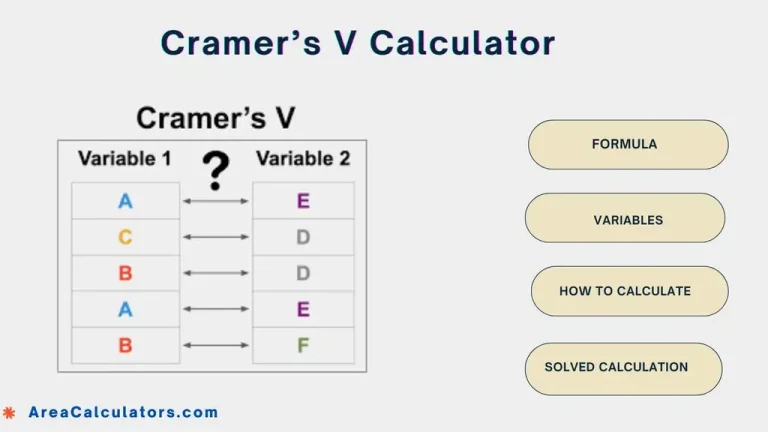Resultant Force Calculator
To find the resultant force (Fxy) between two force components, use the given formula. Start by calculating the square root of the sum of the squares of the forces in the x and y directions, and then find the angle (A) using the arctangent of Fy divided by Fx.
The Resultant Force Calculator is significantly designed to record the result of combined effect of two forces acting in perpendicular directions. No doubt, calculating the resultant force and its angle is essential for physics, engineering, and mechanics, helping to understand how different force vectors interact and what their net effect will be.
This calculation can be used in various applications, such as analyzing forces in structures, mechanical systems, and vector-related problems.
Formula:
| Variable | Description |
|---|---|
| Fxy | Resultant force magnitude |
| Fx | Force component in the x-direction |
| Fy | Force component in the y-direction |
| A | Angle of the resultant force |
| tan⁻¹ | Arctangent function |
Solved Calculations:
Example 1:
Calculate the resultant force and angle when Fx = 30 N and Fy = 40 N.
| Step | Calculation |
|---|---|
| 1 | Fxy = Sqrt((30)^2 + (40)^2) |
| 2 | Fxy = Sqrt(900 + 1600) |
| 3 | Fxy = Sqrt(2500) |
| 4 | Fxy = 50 N |
| 5 | A = tan⁻¹(40/30) |
| 6 | A ≈ 53.13° |
Answer: Resultant force = 50 N, Angle ≈ 53.13°
Example 2:
Calculate the resultant force and angle when Fx = 20 N and Fy = 15 N.
| Step | Calculation |
|---|---|
| 1 | Fxy = Sqrt((20)^2 + (15)^2) |
| 2 | Fxy = Sqrt(400 + 225) |
| 3 | Fxy = Sqrt(625) |
| 4 | Fxy = 25 N |
| 5 | A = tan⁻¹(15/20) |
| 6 | A ≈ 36.87° |
Answer: Resultant force = 25 N, Angle ≈ 36.87°

